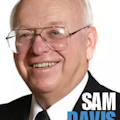H-1B visas are a federal guest-worker program allowing foreigners to work in the United States temporarily. The U.S. tech industry has long advocated that the H-1B program is crucial to American competitiveness. H-1B visas permit computer programmers, electronics engineers and other skilled workers to remain in the country for up to six years. The current law limits to 65,000 the number of aliens who may be issued a visa or otherwise provided H-1B status. (The numerical limitation was temporarily raised to 195,000 in FY2001, FY2002 and FY2003.)
Job cuts by tech firms are putting the controversial H-1B program in the spotlight once again. Sen. Charles Grassley, (R-Iowa) kicked off the latest debate in January by calling on companies like Microsoft to prioritize American workers over foreign guest workers as the company downsizes. However, questions have been raised about the legality of releasing H-1B workers first.
Grassley's recent letter to Microsoft chief executive Steve Ballmer furthered his America-first message. He wrote because Microsoft disclosed on January 22 that it would cut as many as 5,000 jobs in the next 18 months. Grassley contacted Microsoft because that company has been among the most vocal advocates for additional H-1B visas.
Grassley's letter said that during a layoff, businesses should not retain H-1B or other work visa program employees over qualified American workers. “Our immigration policy is not intended to harm the American workforce. I encourage Microsoft to ensure that Americans are given priority in job retention,” Grassley said.
It's not clear whether a U.S. employer could legally follow Grassley's advice and trim its foreign guest workers ahead of qualified American citizens and permanent residents. It is possible that arbitrarily laying off lawfully employed foreign workers first could subject a firm to potential legal liability under federal anti-discrimination laws. Title VII of the Civil Rights Act bans employment discrimination based on national origin.
Although the downturn in the U.S. economy has exacerbated employment problems, there are other problems associated with keeping the H-1B program “honest.” See what you think after reading the following information about the H-1B program and its Benefit Fraud and Compliance Assessment (BFCA). The September 2008 BFCA by the U.S. Citizenship and Immigration Services (USCIS) of the Department of Homeland Security discloses several problems with the H-1B nonimmigrant worker program.
This current BFCA identified some circumstances where, although there was no evidence of willful fraud, there was evidence that the employer or alien beneficiary had failed to comply with applicable laws and regulations. Examples include:
- The H-1B employer required the beneficiary to pay the American Competitiveness and Workforce Improvement Act (ACWIA) fee or deducted certain fees, effectively lowering the beneficiary's wages to less than the required prevailing wage.
- The employer failed to pay the beneficiary at least the prevailing wage for the particular occupation in the specific geographical location.
- The beneficiary was working in a geographical location not covered by data filed with the Department of Labor (DOL), as required.
- The employer placed the beneficiary in a nonproductive status, commonly referred to as “benching,” where beneficiaries are not paid or paid less than the full hours specified on the petition when work was not immediately or continuously available.
Misrepresentations uncovered by the BFCA included:
- The business did not exist.
- The educational degrees or experience letters submitted were confirmed to be fraudulent.
- Signatures had been forged on supporting documentation.
- The beneficiary was performing duties that were significantly different from those described to the DOL. In one instance, the position was that of a business development analyst. However, when USCIS conducted its review, the petitioner stated the H-1B beneficiary would he working in a laundromat doing laundry and maintaining washing machines.
About the Author

Sam Davis
Sam Davis was the editor-in-chief of Power Electronics Technology magazine and website that is now part of Electronic Design. He has 18 years experience in electronic engineering design and management, six years in public relations and 25 years as a trade press editor. He holds a BSEE from Case-Western Reserve University, and did graduate work at the same school and UCLA. Sam was the editor for PCIM, the predecessor to Power Electronics Technology, from 1984 to 2004. His engineering experience includes circuit and system design for Litton Systems, Bunker-Ramo, Rocketdyne, and Clevite Corporation.. Design tasks included analog circuits, display systems, power supplies, underwater ordnance systems, and test systems. He also served as a program manager for a Litton Systems Navy program.
Sam is the author of Computer Data Displays, a book published by Prentice-Hall in the U.S. and Japan in 1969. He is also a recipient of the Jesse Neal Award for trade press editorial excellence, and has one patent for naval ship construction that simplifies electronic system integration.
You can also check out his Power Electronics blog.